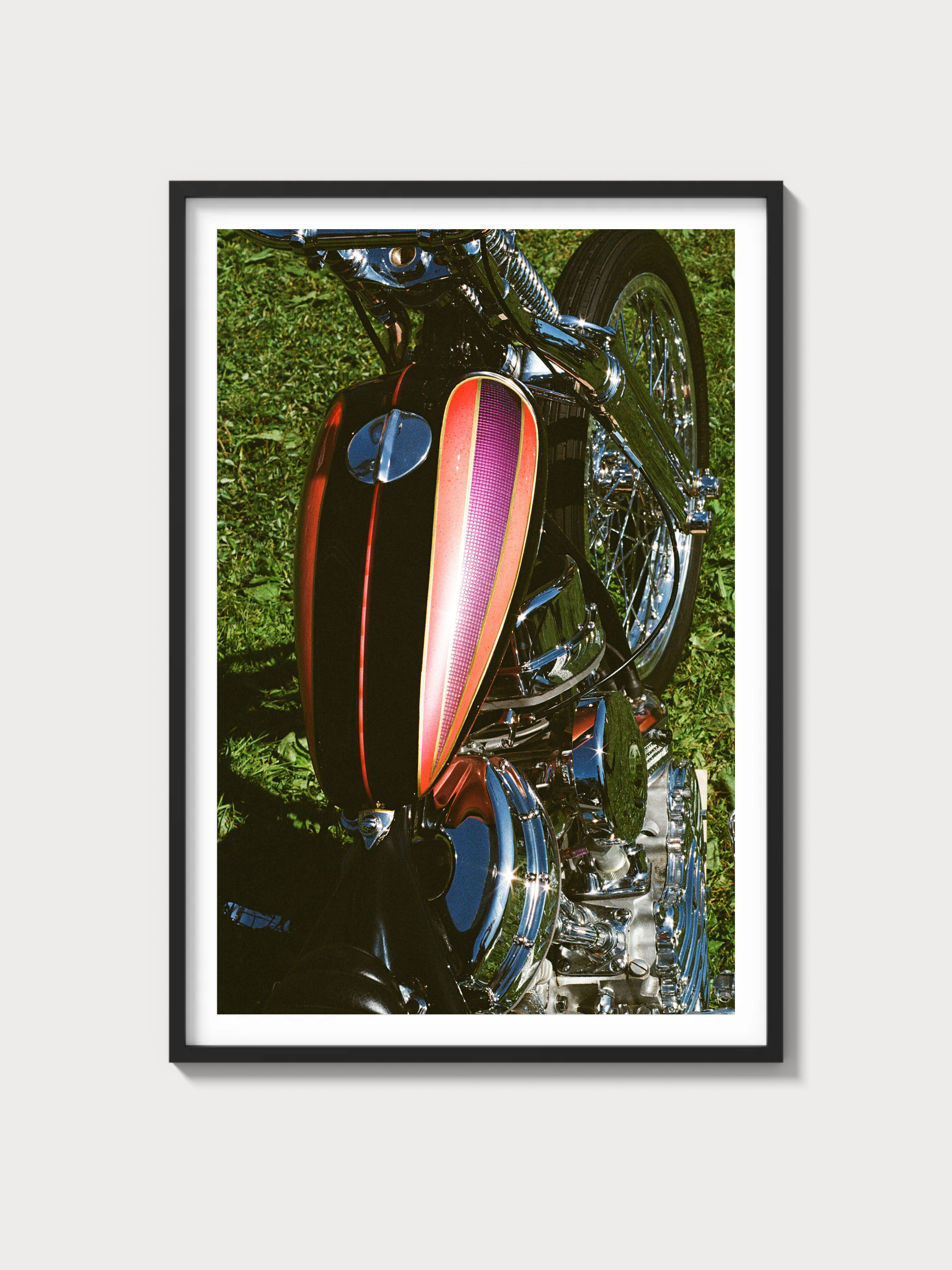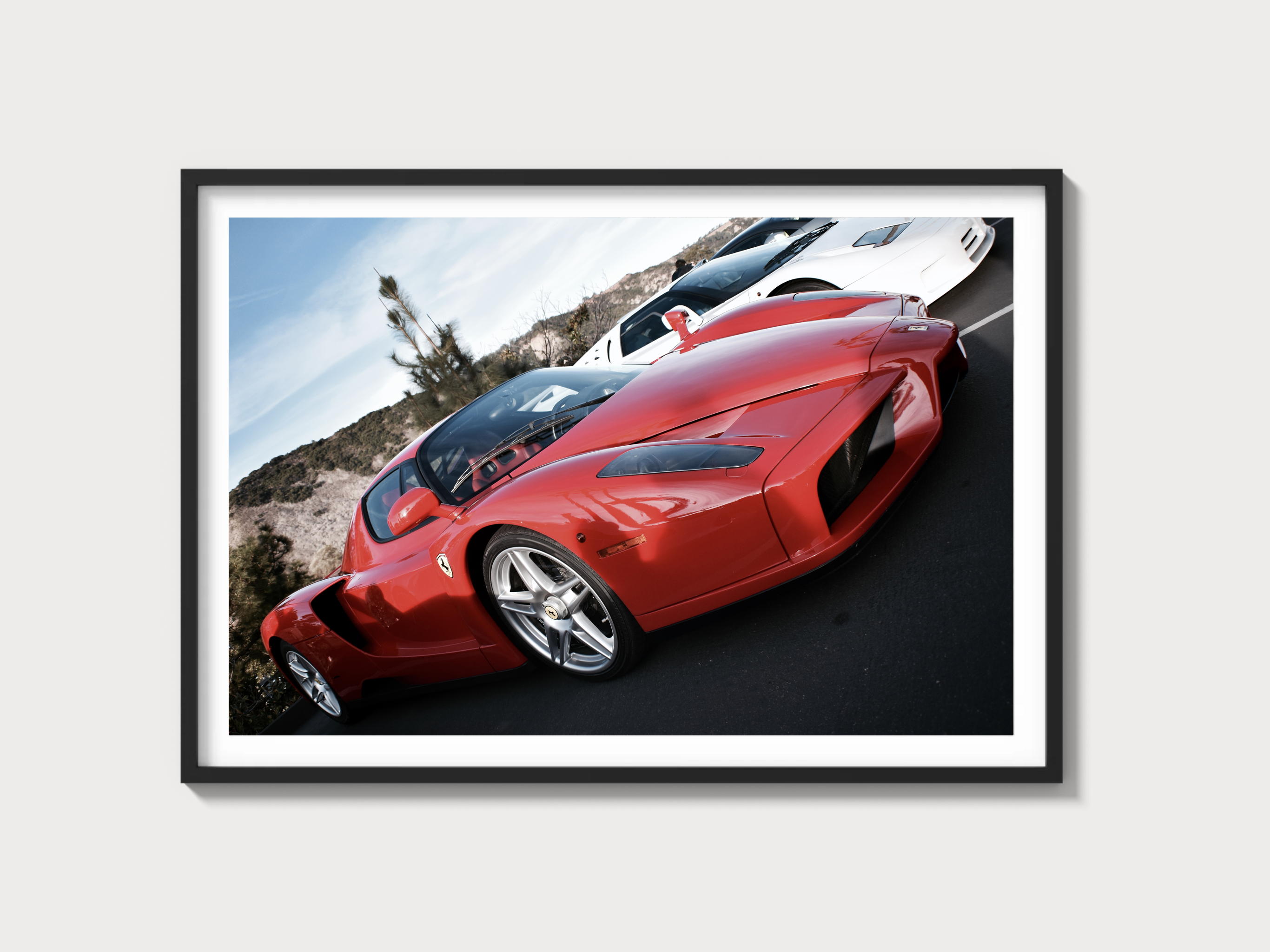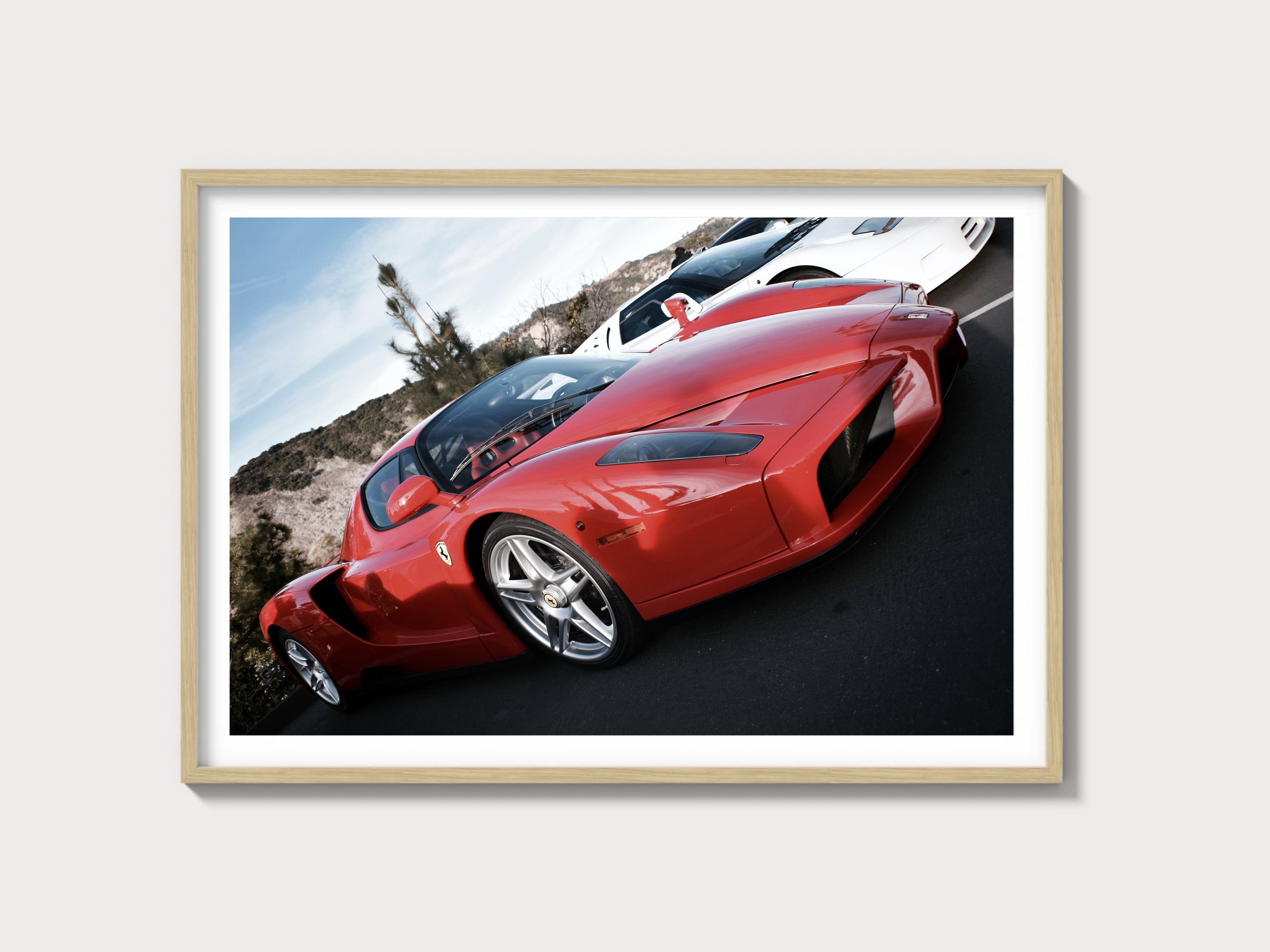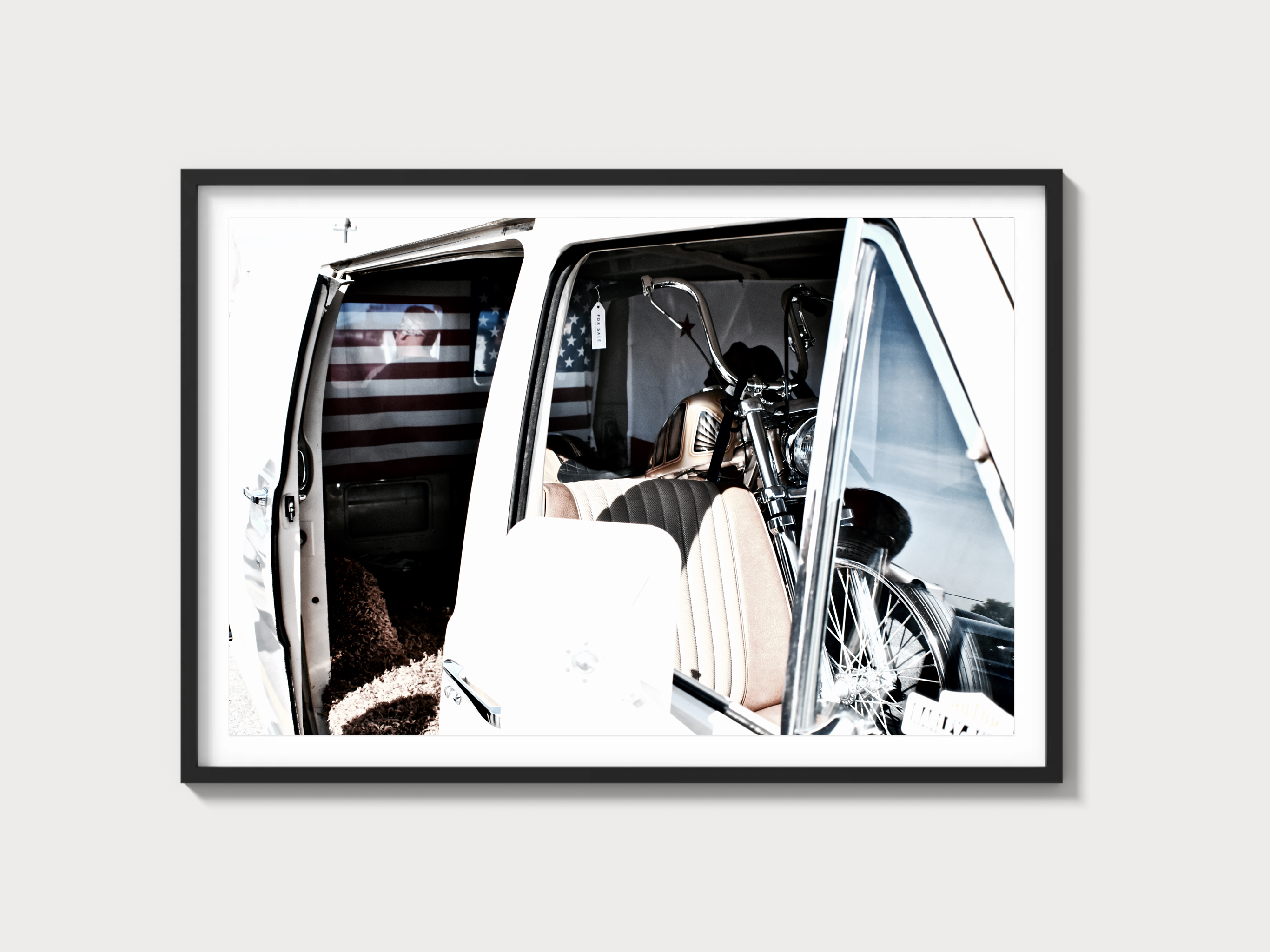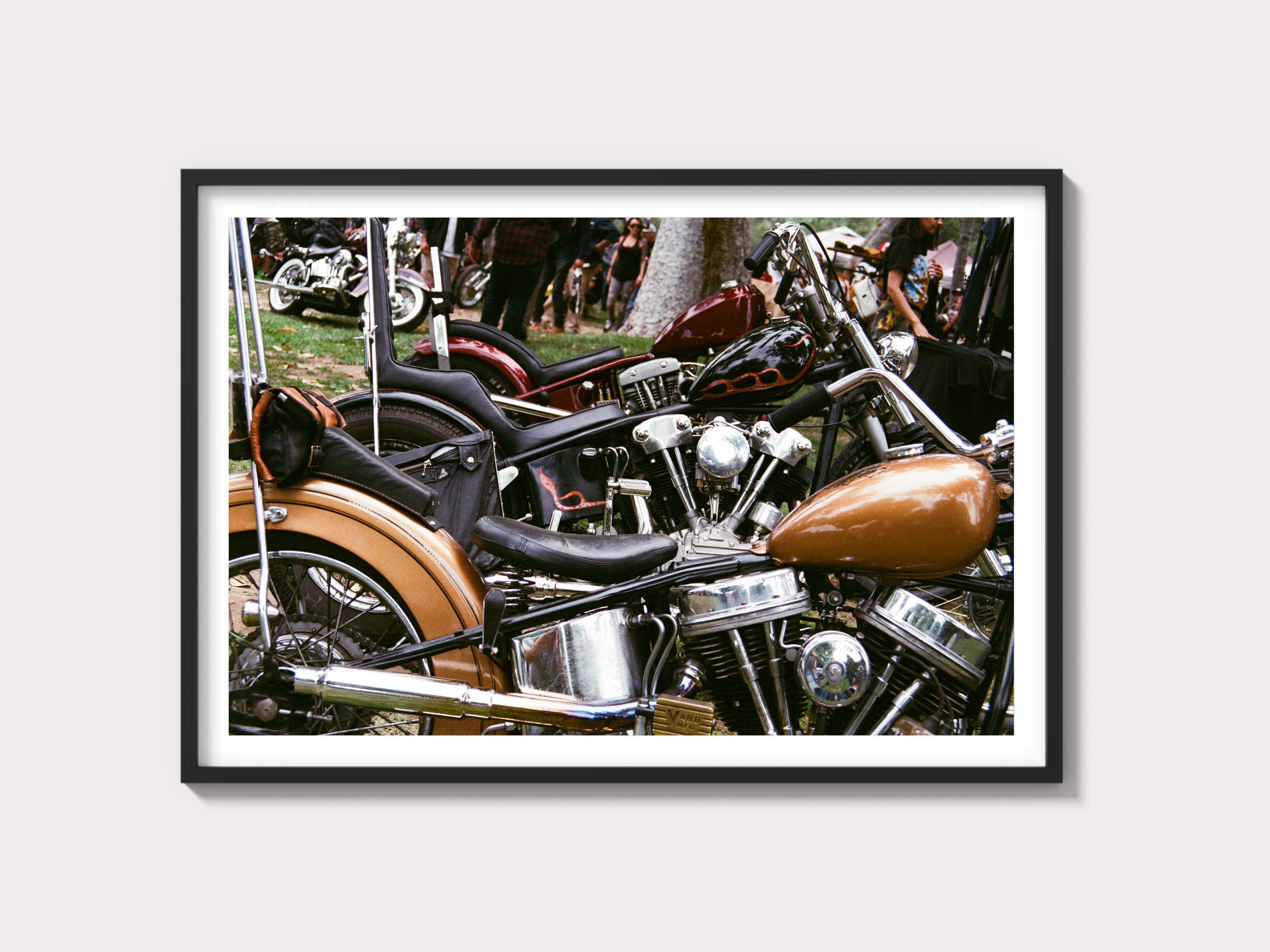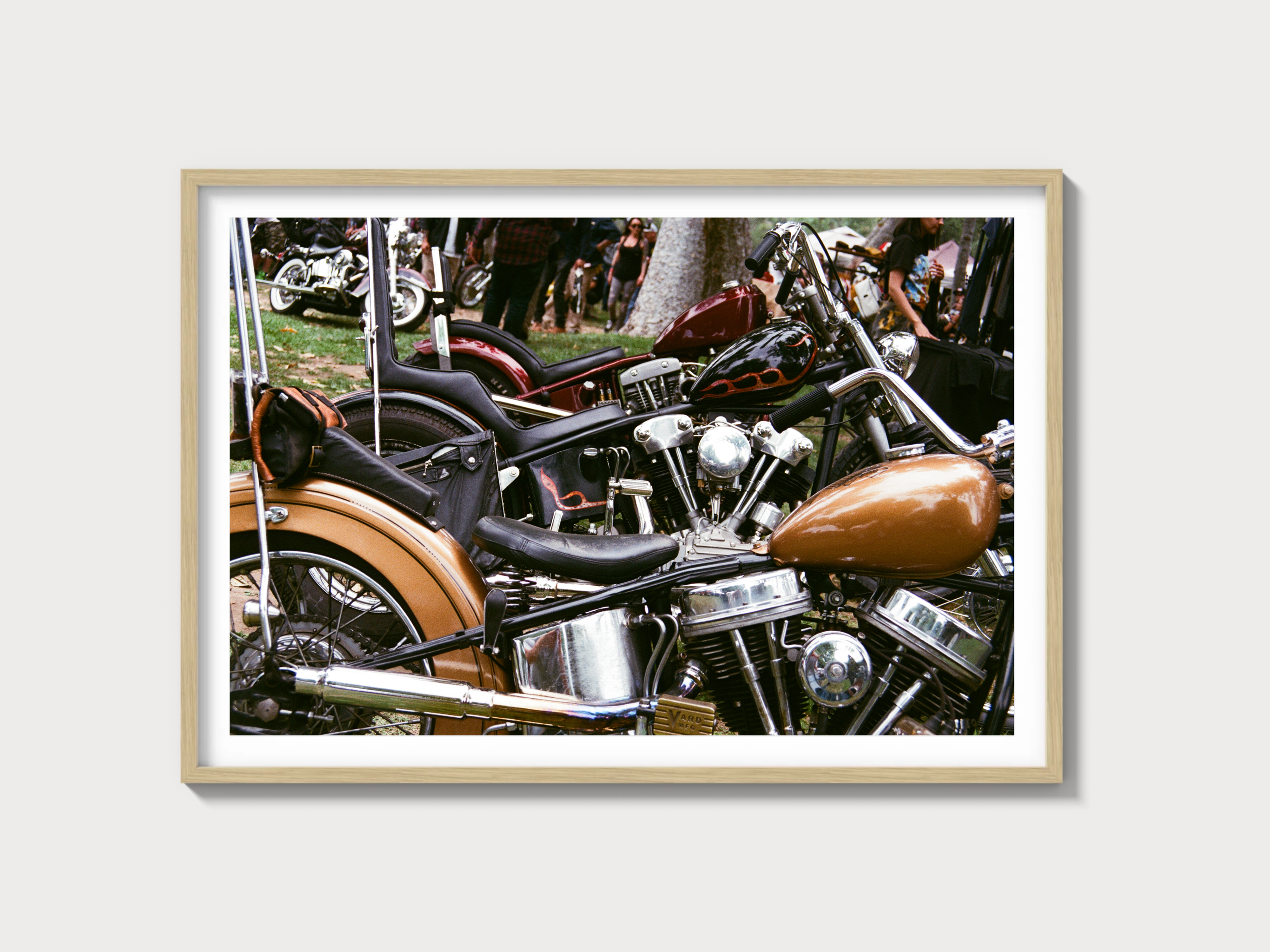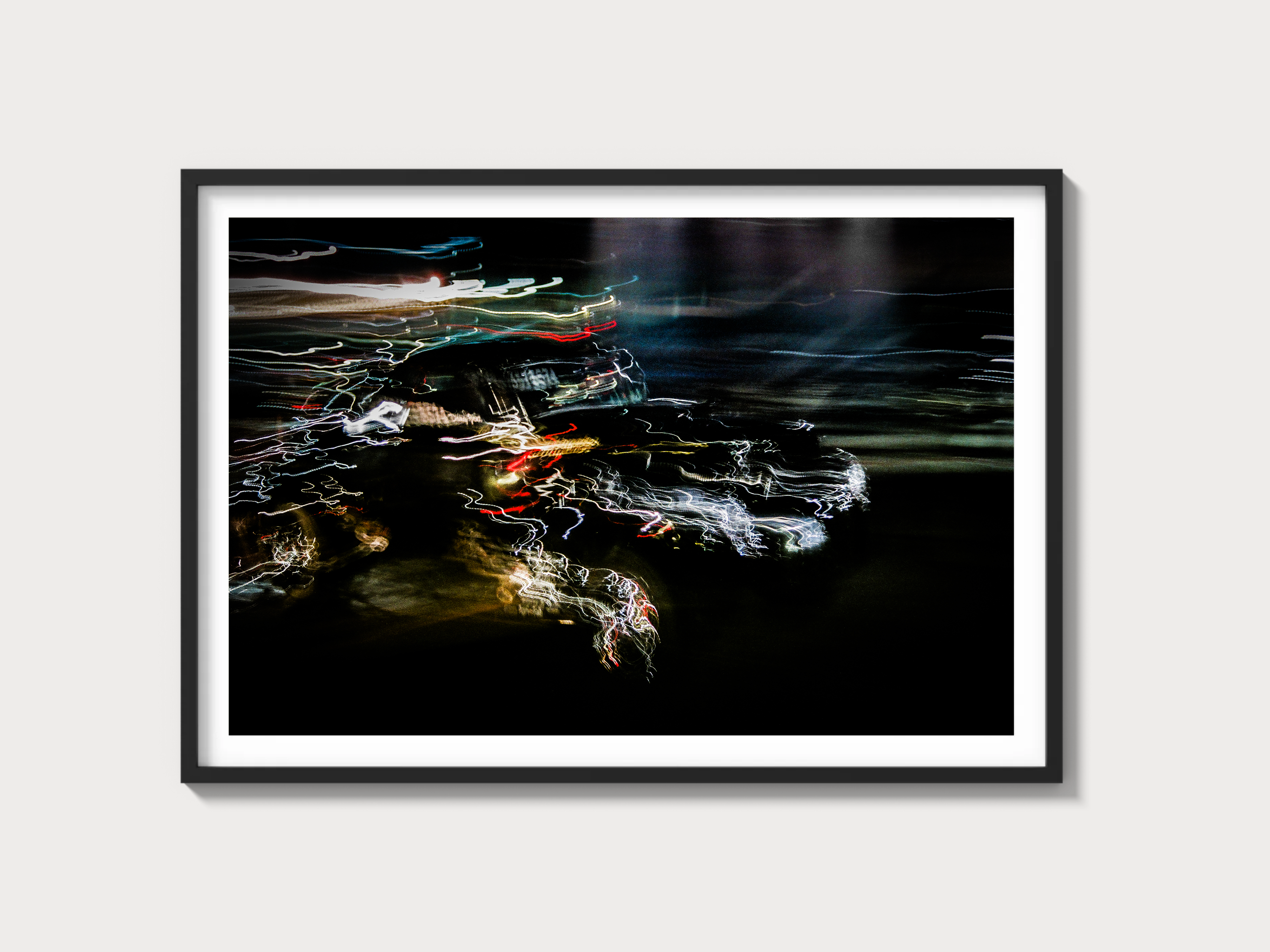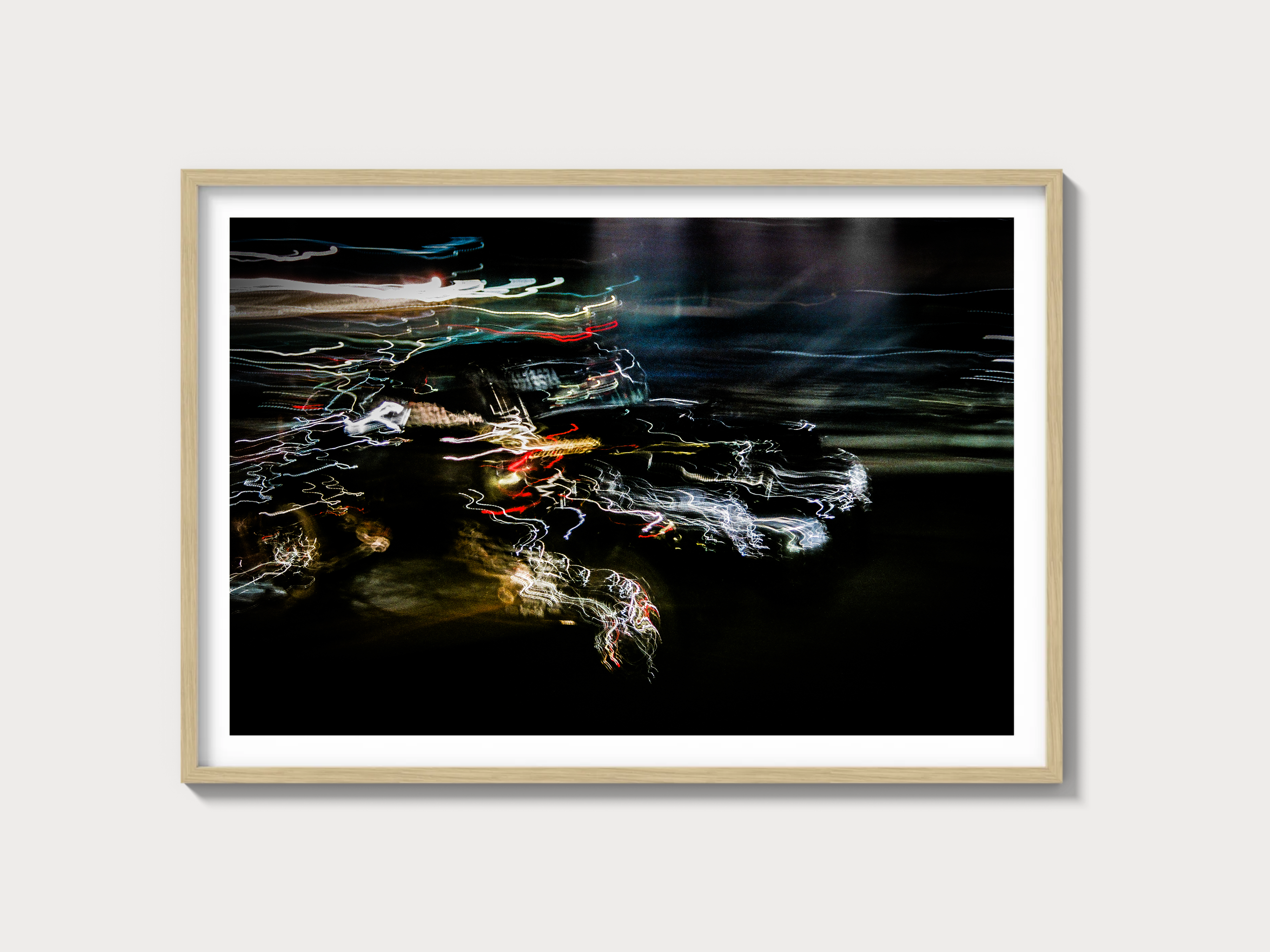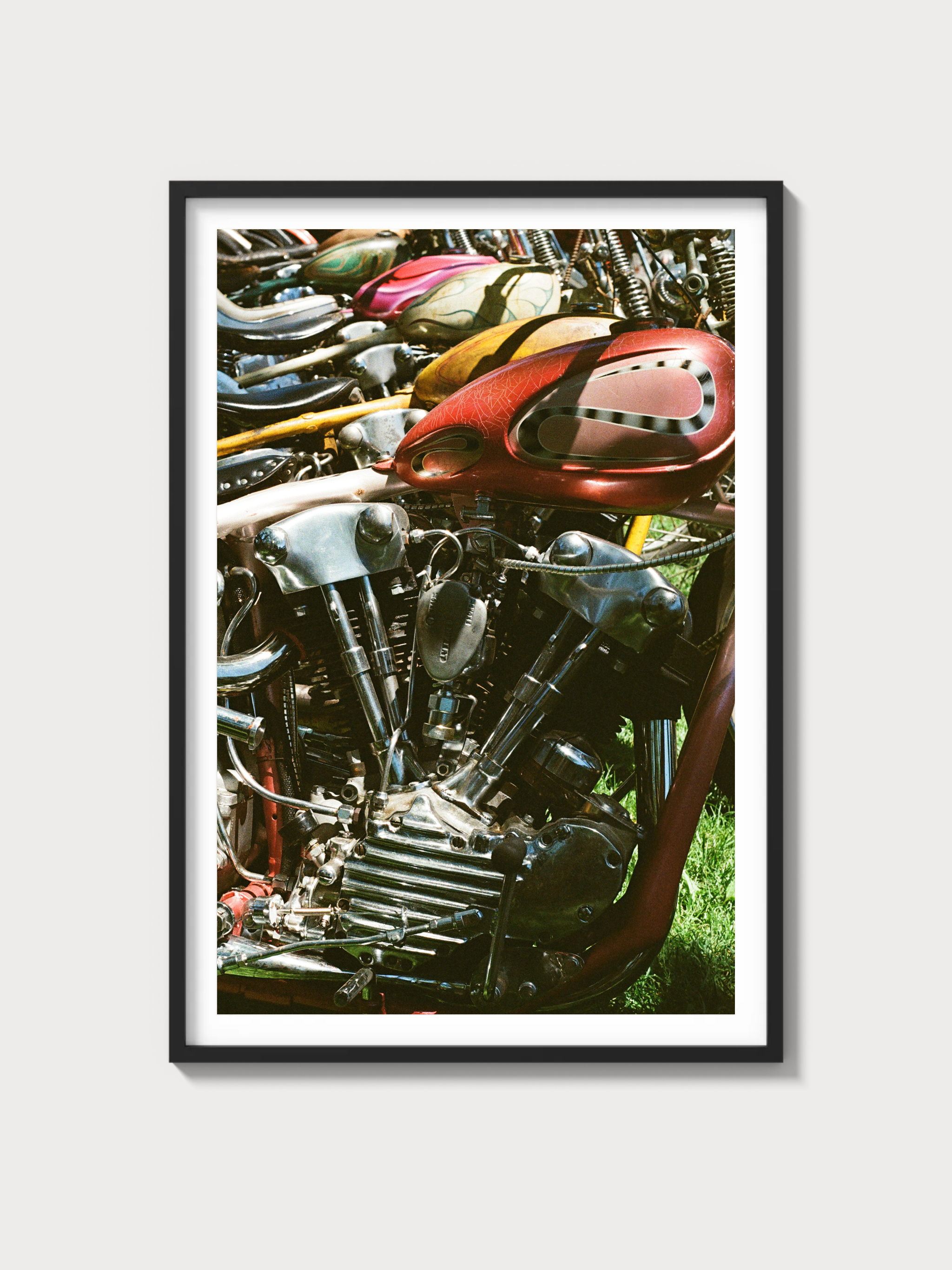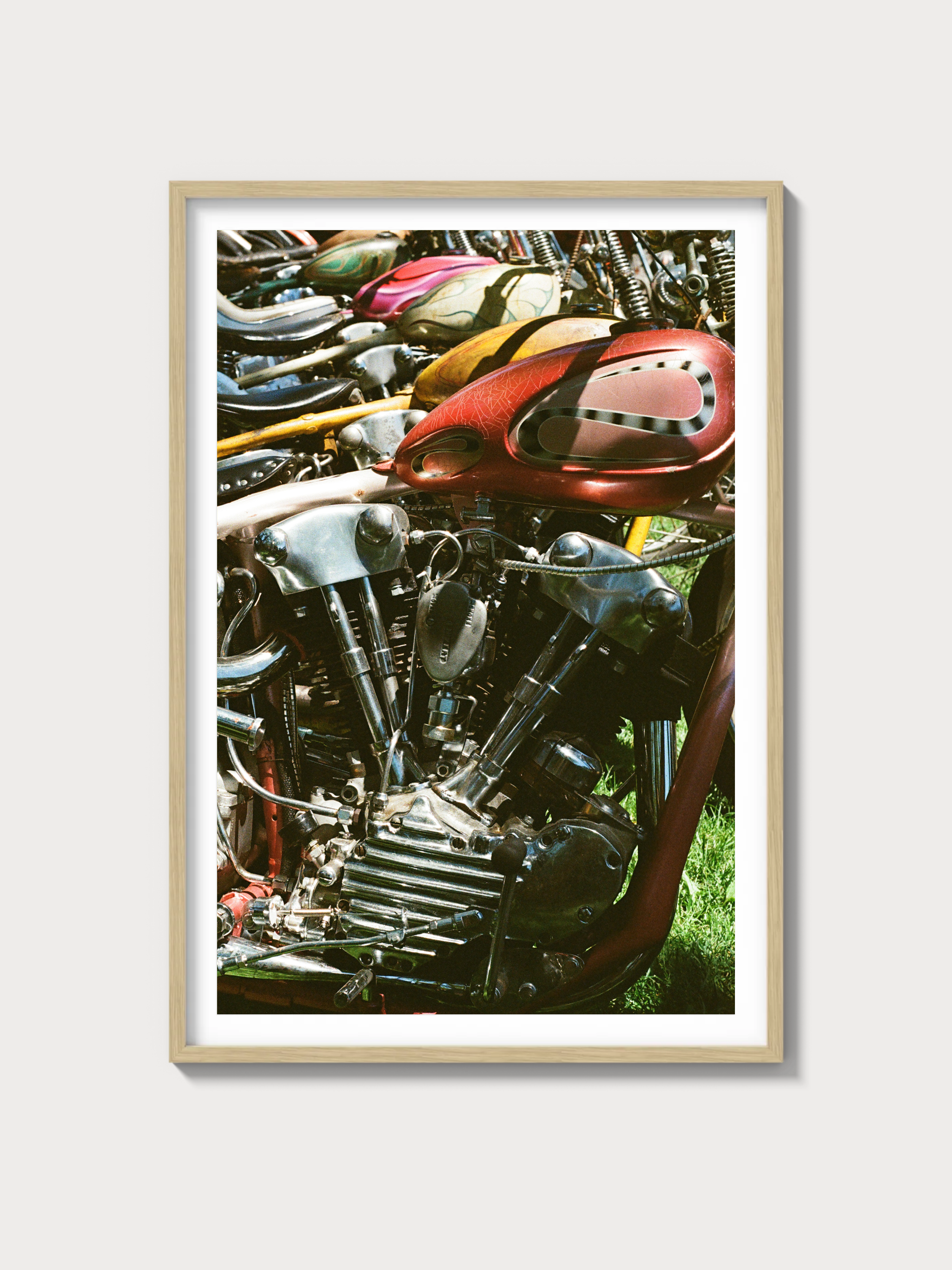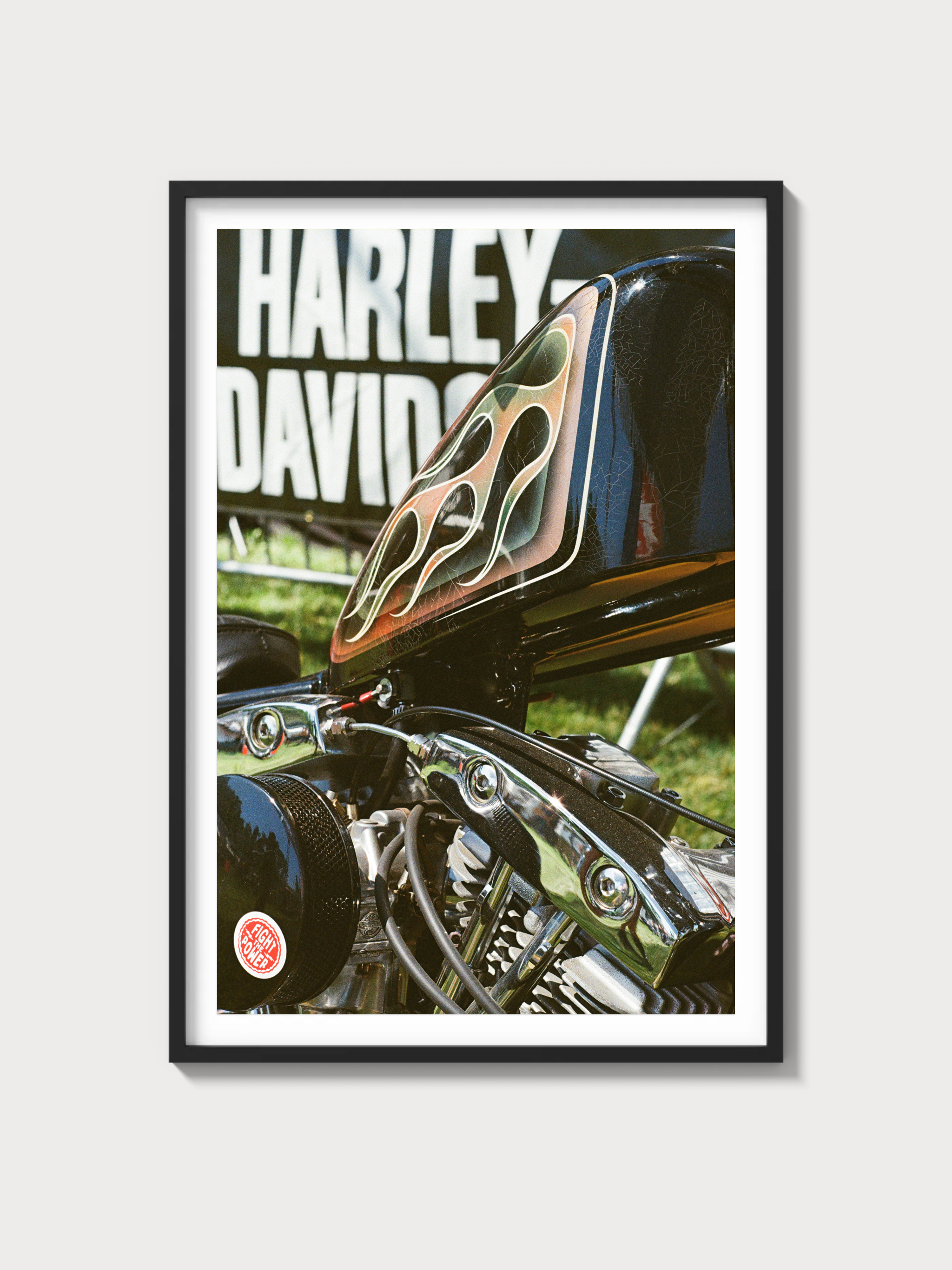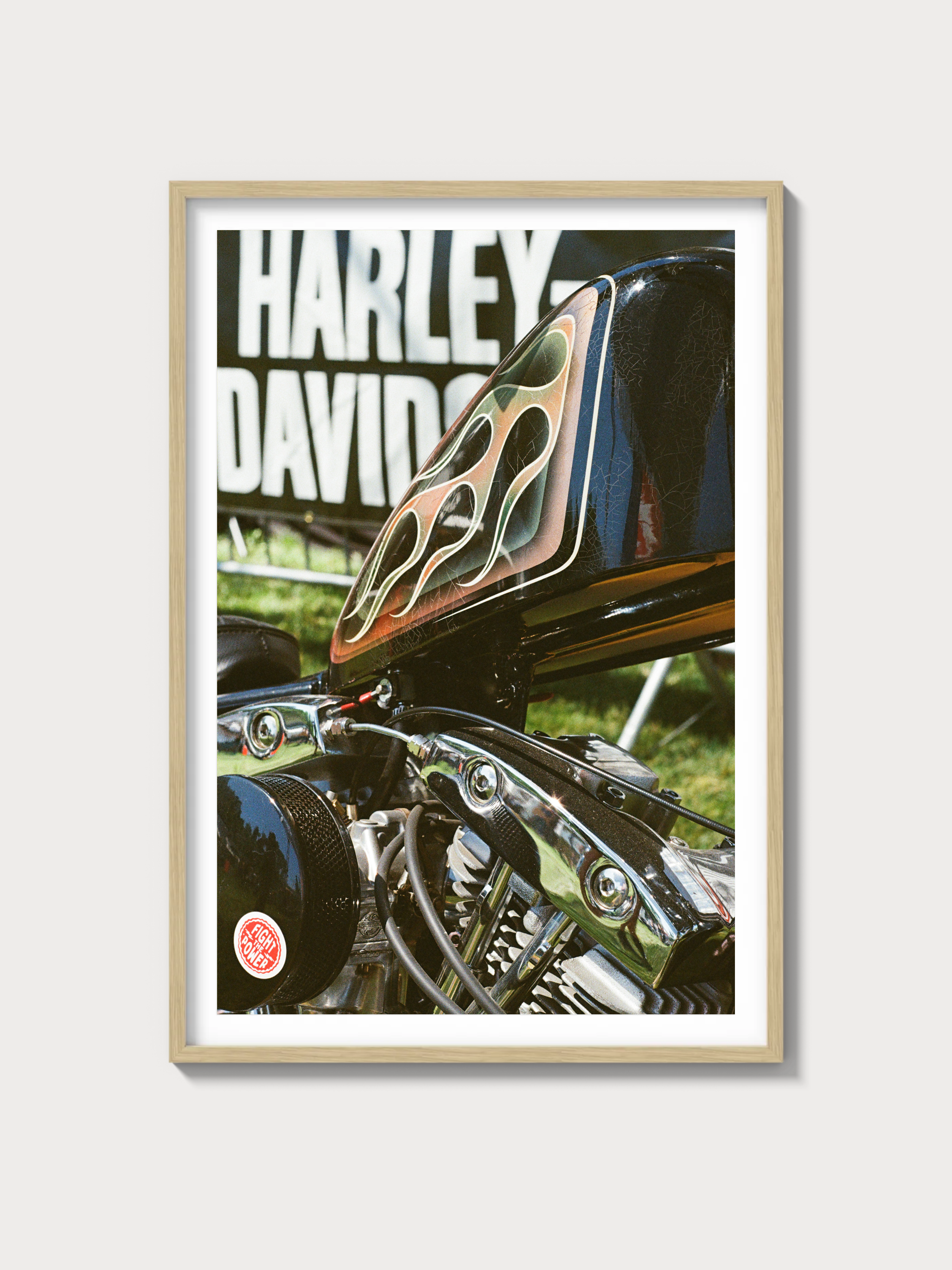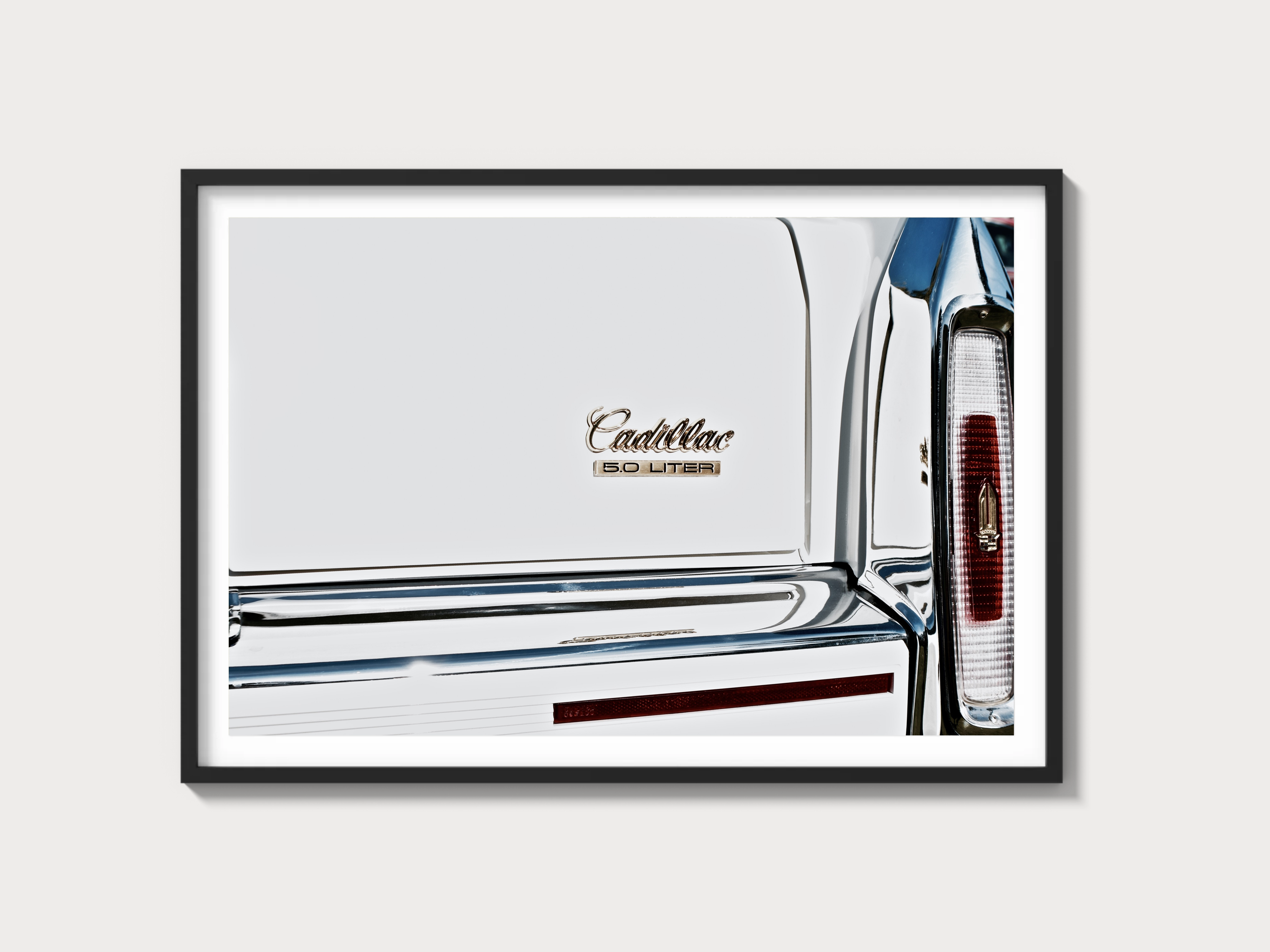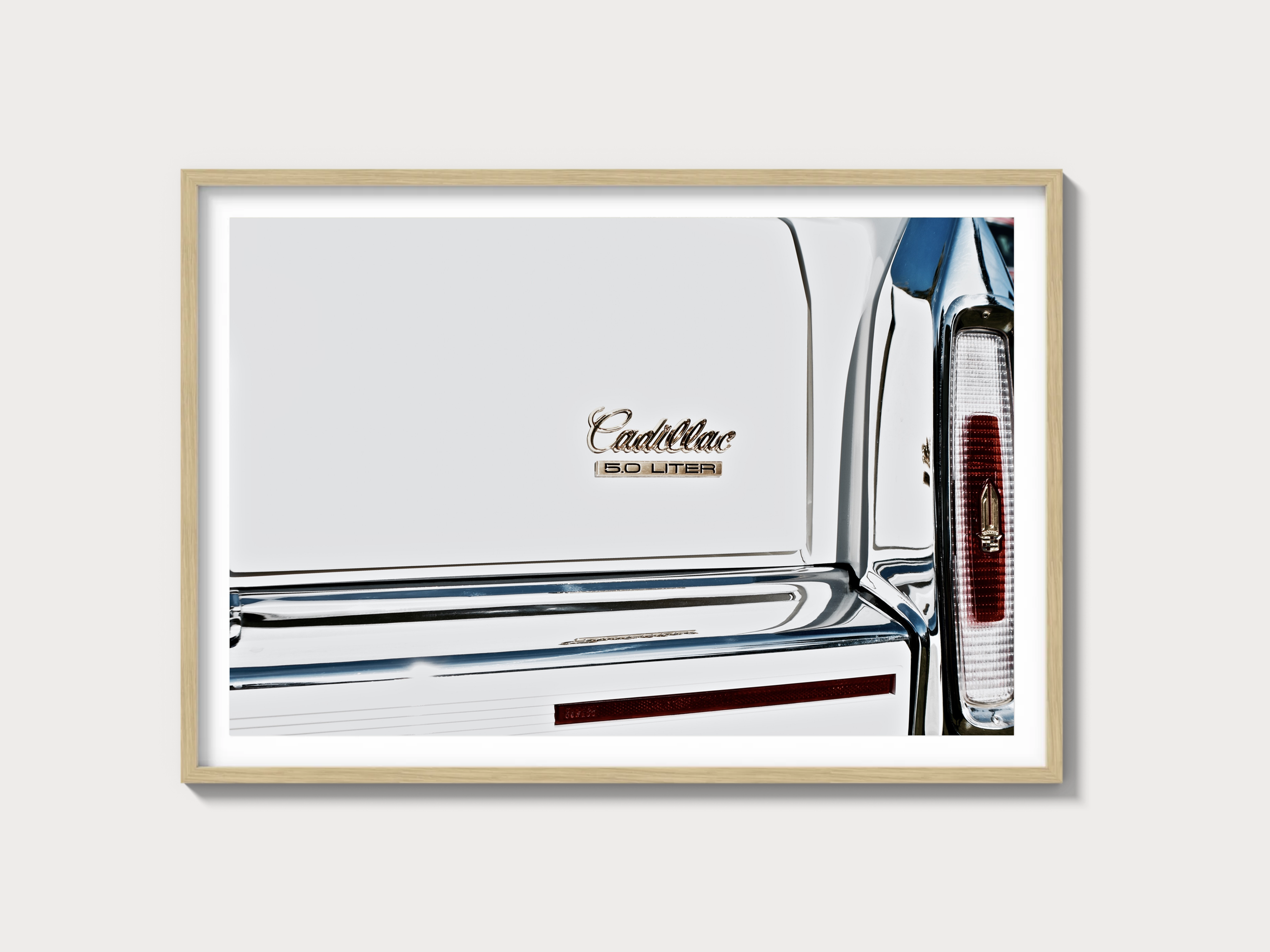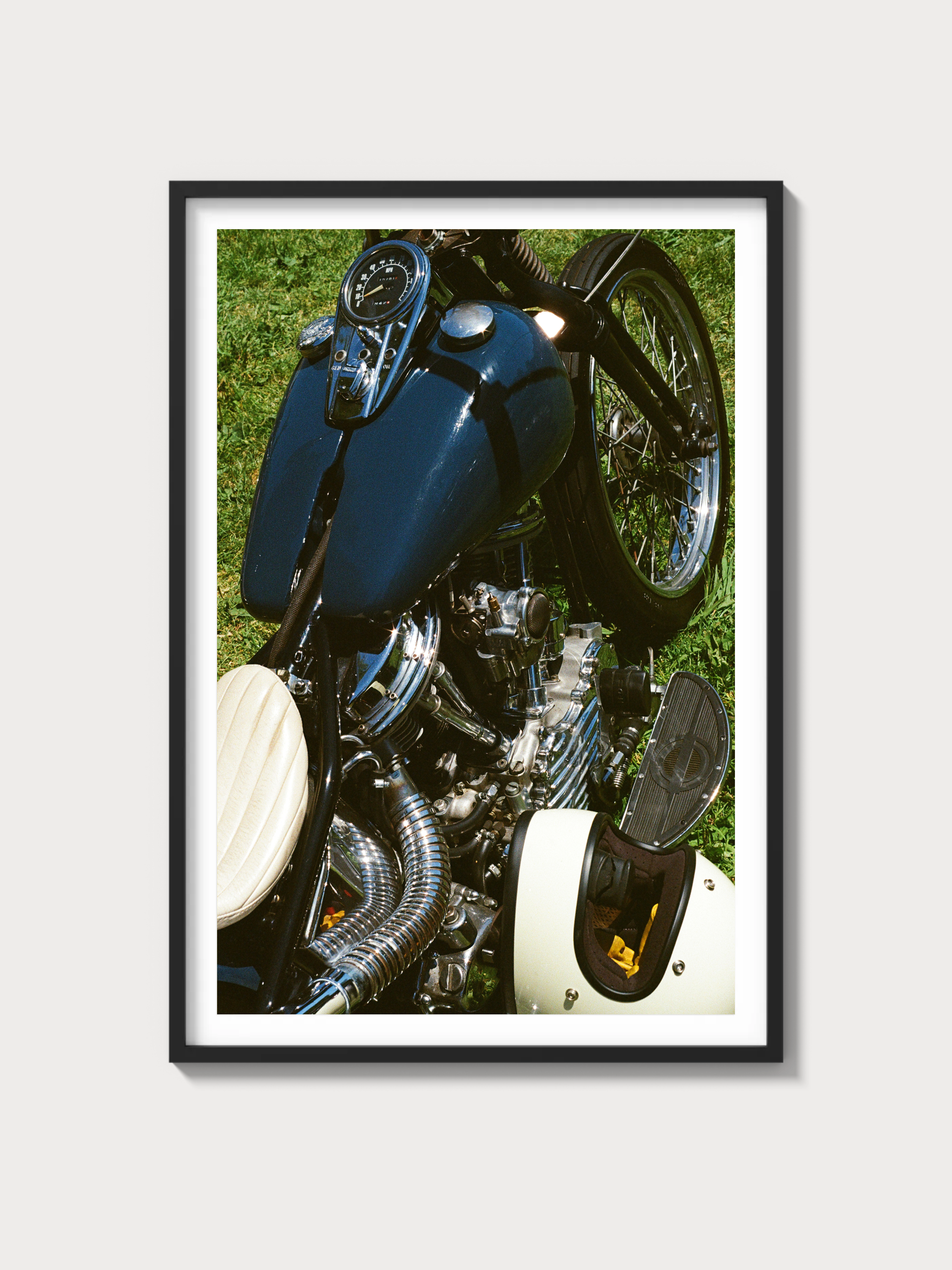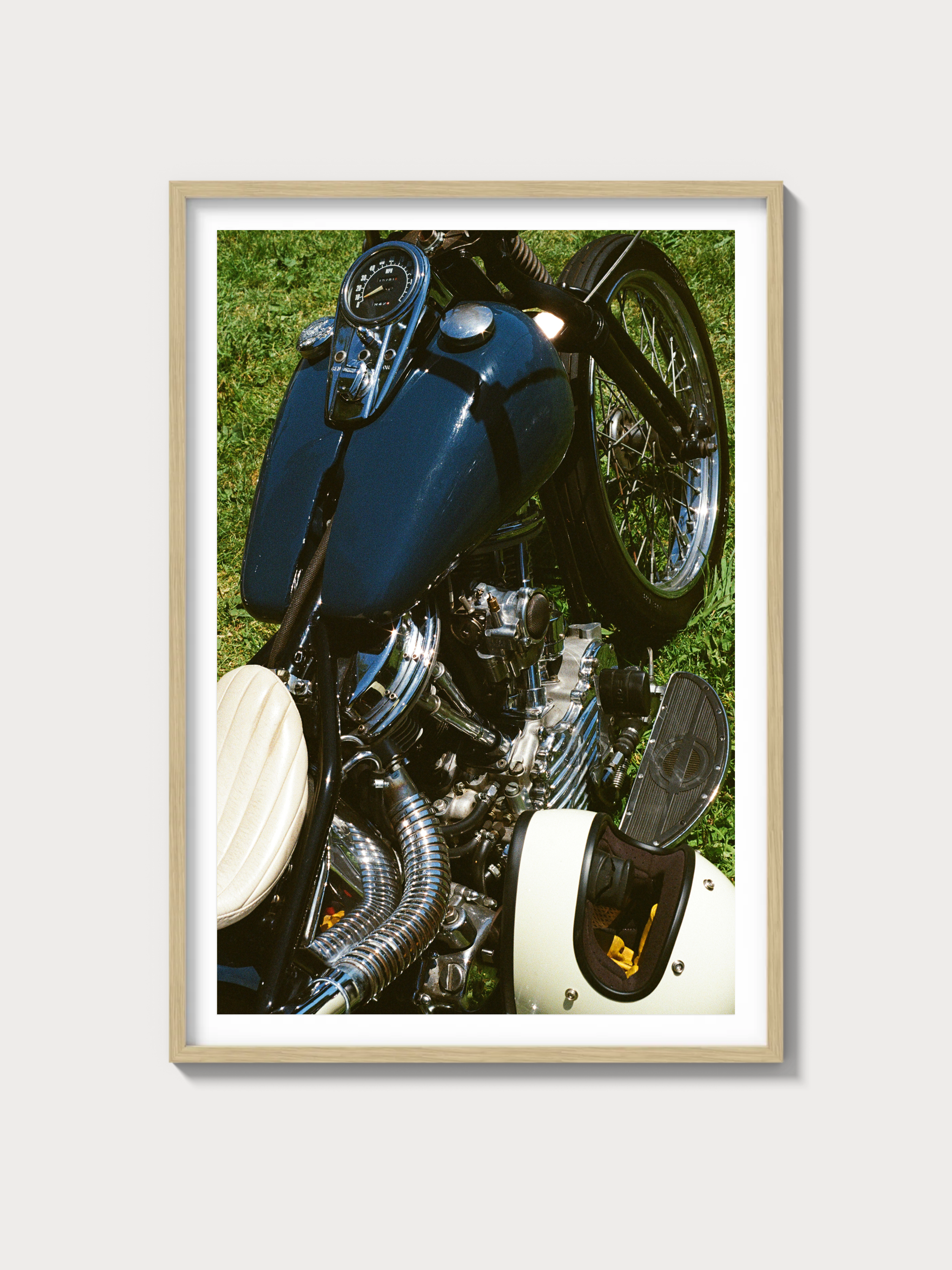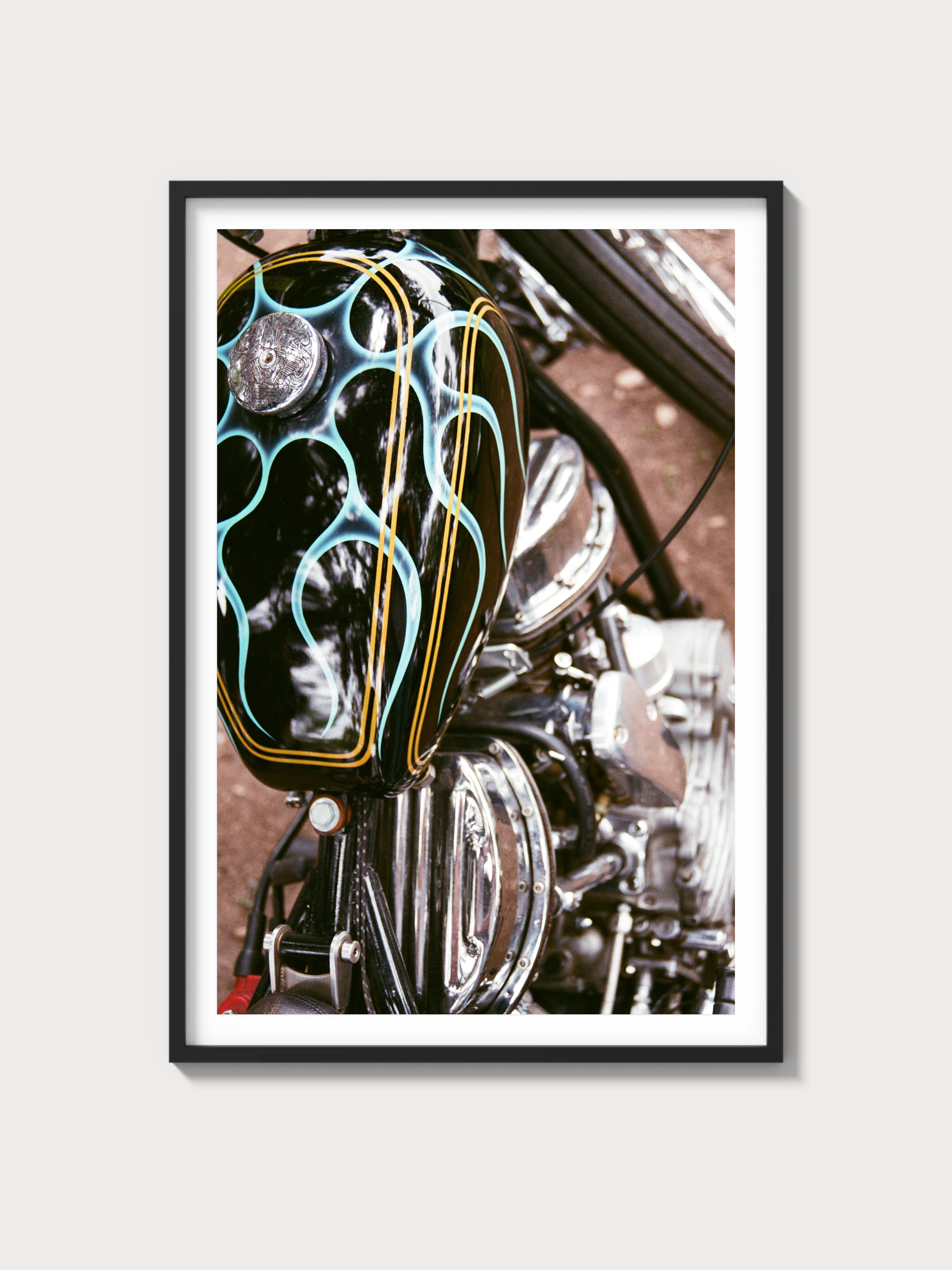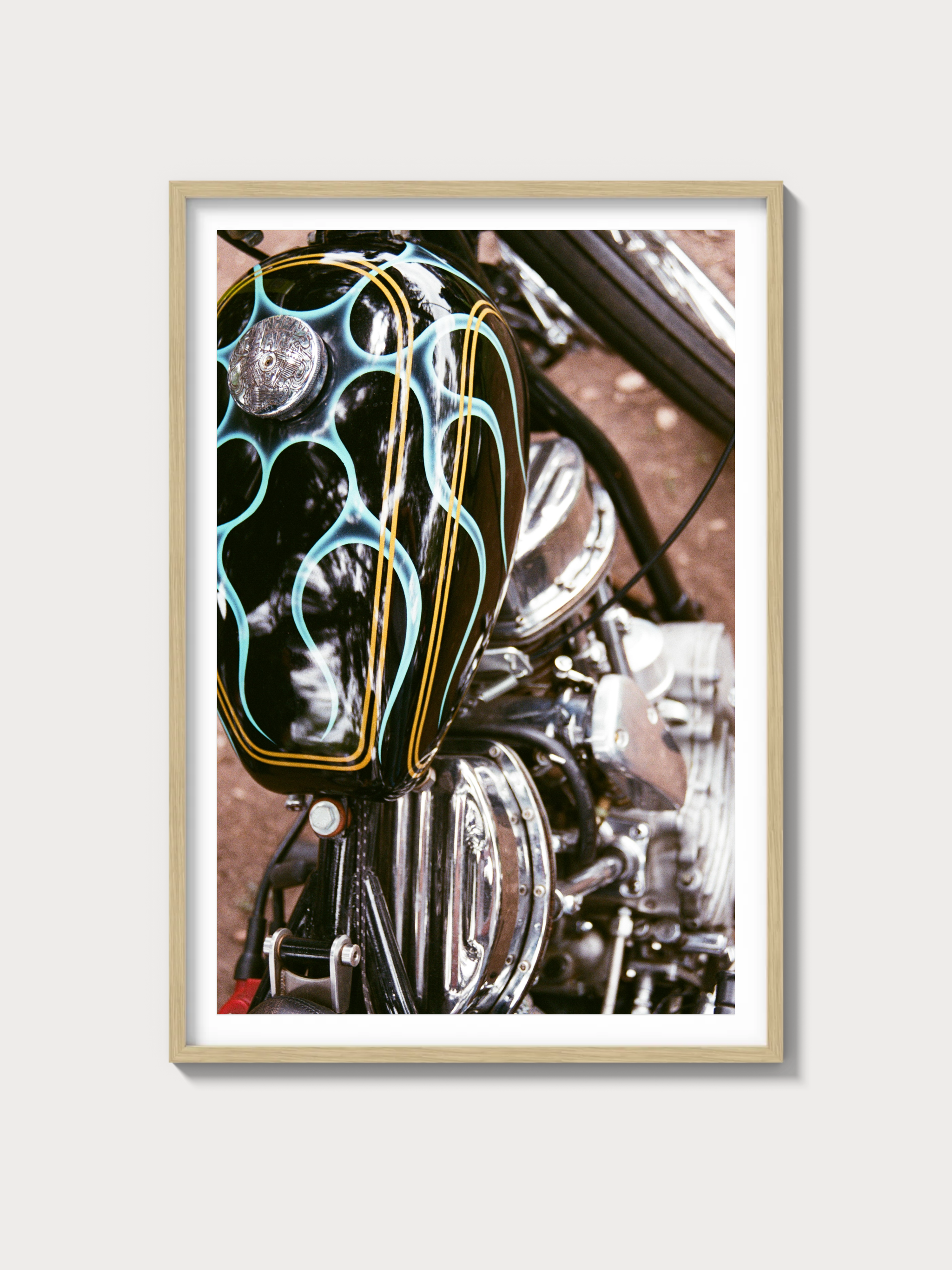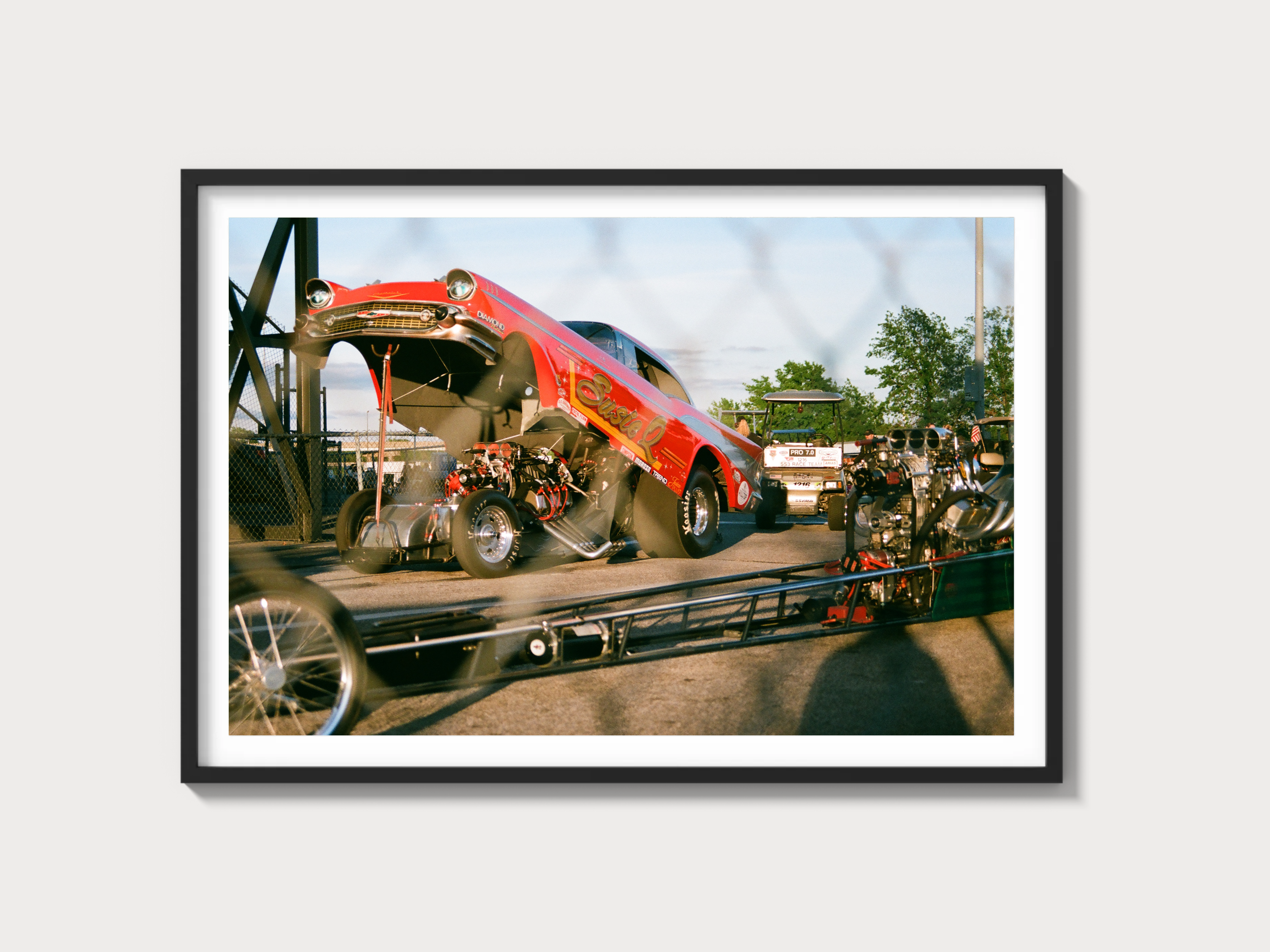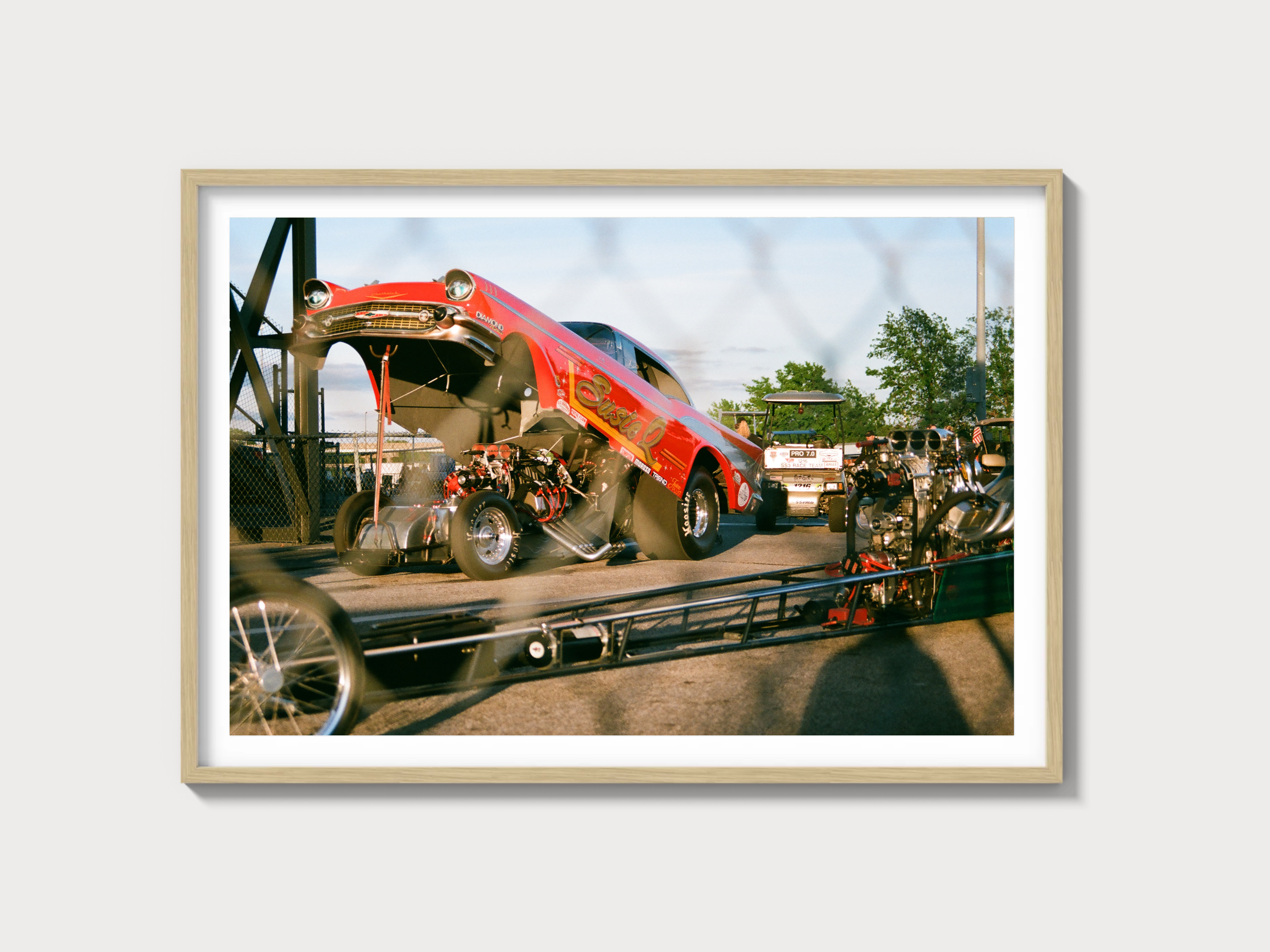1985–1990 Chevrolet Camaro IROC-Z — The Third‑Gen’s Sweet Spot
Historical context and development background
Chevrolet introduced the IROC-Z in 1985 as a performance evolution of the Z28, named after the International Race of Champions series. It arrived during a pivotal moment when the third‑generation Camaro (1982–1992) had already shifted the F‑body into a lighter, more contemporary platform with a lower cowl, better aero, and a genuine focus on handling. The IROC-Z sharpened that formula with lowered ride height, firmer spring and damper rates, quick steering, and sticky 16-inch rubber that, for the time, made it one of the most capable American coupes on a winding backroad.
Corporate priorities at GM in the mid‑1980s were finally embracing fuel injection en masse. The IROC-Z became the showroom billboard for Tuned Port Injection (TPI), first on the 5.0‑liter LB9 and later on the 5.7‑liter L98 V8. Compared with the earlier carbureted L69 HO, TPI delivered a flatter torque curve and markedly improved drivability. The IROC also served as a halo against its most direct rival—the Ford Mustang GT—while squaring up to more expensive imports like the Porsche 944 and Toyota Supra on chassis balance rather than badge cachet.
Stylistically, the IROC-Z is pure late‑’80s: deep front air dam, sill extensions, and that distinctive aero rear spoiler. Its optional 16×8 cast‑aluminum wheels wearing 245/50VR16 Goodyear “Gatorback” tires became an instant signature. Beneath the visual bravado, however, the package was substantive—quicker steering, larger anti‑roll bars, DeCarbon gas‑pressurized dampers, and carefully tuned spring rates that reduced roll without turning the car brittle.
Engine and technical specifications
TPI was the star. A long‑runner intake manifold emphasized low‑to‑midrange torque—exactly what a street‑driven small‑block benefits from. Across 1985–1990, the IROC-Z carried two principal injected V8s, with power figures and calibrations varying by year and transmission.
| Variant | Engine configuration | Displacement | Horsepower (factory) | Induction type | Redline | Fuel system | Compression | Bore/Stroke |
|---|---|---|---|---|---|---|---|---|
| 5.0 TPI (LB9) | 90° OHV V8, iron block/heads | 5.0 L (305 cu in) | Approx. 190–220 hp (year/trans dependent) | Naturally aspirated, Tuned Port Injection | ~5,500 rpm | Multi‑port injection, MAF (’85–’89); MAP speed‑density (’90) | ~9.3–9.5:1 | 3.736 × 3.48 in (95.0 × 88.4 mm) |
| 5.7 TPI (L98) | 90° OHV V8, iron block/heads | 5.7 L (350 cu in) | Approx. 225–240 hp (year dependent; automatic only) | Naturally aspirated, Tuned Port Injection | ~5,000 rpm | Multi‑port injection, MAF (’87–’89); MAP for ’90 calibration | ~9.0–9.5:1 | 4.000 × 3.48 in (101.6 × 88.4 mm) |
| 5.0 HO (L69, early years) | 90° OHV V8, iron block/heads | 5.0 L (305 cu in) | ~190 hp (4‑bbl carb; manual) | Naturally aspirated, 4‑bbl carburetor | ~5,500 rpm | Carbureted (limited availability ’85–’86) | ~9.5:1 | 3.736 × 3.48 in (95.0 × 88.4 mm) |
Transmission pairings were equally important. The 5.7 L98 was automatic‑only (700R4/4L60), while the 5.0 LB9 could be had with either the Borg‑Warner T‑5 five‑speed manual or the four‑speed overdrive automatic, depending on year and calibration.
Driving experience and handling dynamics
Even today, the best IROC-Zs feel cohesive in a way many period muscle cars do not. Steering response is quick off center and suitably hefty; the lower ride height and larger anti‑roll bars yield flatter cornering than a contemporary Mustang GT. Chevrolet spec’d DeCarbon gas dampers and stiffer bushings that, combined with the wide 245‑section VR‑rated tires, delivered a planted front end with confident turn‑in. The chassis layout—MacPherson struts up front, a torque‑arm/live‑axle rear with trailing links and a Panhard rod—trades ultimate compliance for excellent traction and predictability on corner exit.
The Tuned Port Injection intake defines the car’s character. Long runners produce satisfying low‑rpm thrust; the engines pull with authority from 1,500 rpm, making the IROC deceptively quick in real‑world driving. Peak power arrives relatively early, so short‑shifting the T‑5 manual hardly penalizes pace. The 700R4 automatic’s deep 3.06:1 first gear helps launch, while overdrive keeps revs calm on the highway. Well‑set‑up cars feel fluid: throttle steering is natural, the limited‑slip differential (fitment varied by option set) digs in rather than skittering, and the brakes—adequate in standard form, robust in 1LE specification—stand up to spirited use.
Full performance specifications
Factory ratings and period testing varied with axle ratio, options, and year. The figures below represent typical performance envelopes for representative IROC-Z configurations.
| Configuration | 0–60 mph | Quarter‑mile | Top speed | Curb weight | Layout | Brakes | Suspension | Gearbox |
|---|---|---|---|---|---|---|---|---|
| 5.0 TPI (LB9), T‑5 manual, 3.42–3.45 axle | ~6.7–7.1 s | ~15.0–15.4 s @ 90–94 mph | ~135–140 mph | ~3,150–3,250 lb | Front‑engine, RWD | Front discs/rear drums (J65 rear discs optional) | Strut front; live‑axle torque‑arm rear | Borg‑Warner T‑5 5‑speed |
| 5.7 TPI (L98), 700R4 auto, 3.23–3.27 axle | ~6.2–6.6 s | ~14.6–15.0 s @ 93–96 mph | ~140–145 mph | ~3,300–3,400 lb | Front‑engine, RWD | Front discs/rear drums (J65 rear discs optional); 1LE heavy‑duty package available | Strut front; live‑axle torque‑arm rear | 700R4 (4‑speed OD) |
Wheel/tire note: IROC-Zs are closely associated with 16×8 cast alloys on 245/50VR16 Goodyear Eagle VR “Gatorback” tires; 15‑inch wheels/tires were also fitted on some examples depending on year and equipment.
Variant breakdown (trims, options, and notable editions)
| Variant / Year(s) | Major differences | Documented production |
|---|---|---|
| IROC-Z 5.0 TPI (LB9) — 1985–1990 | Tuned Port Injection 305 V8; available T‑5 manual or 4‑spd auto (varies by year); lowered suspension, DeCarbon dampers; 16×8 wheels with 245/50VR16 tires (availability by year); IROC stripes/badging | Trim‑specific totals not publicly broken out by Chevrolet |
| IROC-Z 5.7 TPI (L98) — 1987–1990 | 350 V8 (automatic only); higher output and torque; heavy‑duty cooling; axle ratios and limited‑slip availability varied by G‑code options | Trim‑specific totals not publicly broken out by Chevrolet |
| IROC-Z L69 HO (carb) — 1985–1986 | 305 HO 4‑bbl, typically paired with T‑5; transitional spec before full TPI rollout; performance calibration | Limited availability; no published IROC‑only count |
| IROC-Z 1LE — 1988–1990 | Homologation package for Showroom Stock; heavy‑duty brakes (12‑in front rotors and upgraded calipers), performance fuel system/lines, aluminum driveshaft (year dependent), no A/C and minimal sound deadening; typically 5.0 TPI manual | 1988: 4 built; 1989: 111 built; 1990: 62 built |
| 1990 IROC-Z (final‑year badging) | Produced for a shortened run before IROC licensing ended; subsequent 1990 models reverted to Z28 badging | Short run; model‑year split not officially enumerated by trim |
Notes: Color/stripe packages and wheel finishes varied by year. Many axle ratios and brake/rear‑disc options were conditional on engine, transmission, and order codes.
Ownership notes, maintenance, and restoration
- Drivetrain durability: The small‑block Chevrolet is robust. Keep oil changes regular and cooling systems healthy; TPI engines respond well to meticulous vacuum/ground/connector upkeep.
- TPI specifics: Mass‑airflow sensor (’85–’89) health, idle‑air control, throttle‑position sensor, and plenum/EGR gasket integrity are common service points. 1990’s speed‑density calibration eliminates the MAF but demands airtight intake plumbing.
- Transmissions: The T‑5 prefers sympathetic shifting and fresh fluid; aggressive launches on sticky tires can hasten synchro wear. The 700R4’s TV cable adjustment is critical for line pressure and longevity—misadjustment can quickly damage the unit.
- Chassis and brakes: Rubber bushings, torque‑arm mount, and Panhard rod bushings age; DeCarbon shocks are long past their best on unrestored cars. Standard brakes are adequate when fresh; the 1LE setup dramatically improves fade resistance.
- Rust/aging: Inspect rear hatch surrounds, lower doors, rear quarter arches, floorpan torque boxes, and front strut towers. T‑top cars demand careful weatherseal inspection to avoid water ingress.
- Parts availability: Excellent aftermarket and reproduction support exist for third‑gen Camaros, including TPI components, suspension, and interior trim.
- Service intervals (period‑appropriate): Engine oil ~3,000–5,000 miles; plugs/cap/rotor and fuel filter ~30,000 miles; coolant every 2–3 years; differential/transmission fluids per condition and use.
- Restoration difficulty: Mechanically straightforward with strong parts support. Concours‑correct details (decals, wheel finishes, date‑coded components) require careful sourcing.
Cultural relevance and motorsport footprint
The IROC-Z’s name tie‑in gave it instant pop‑culture currency, but the substance kept it there. Period road tests lauded its lateral grip and real‑world pace, and showroom‑stock racers quickly gravitated to the 1LE homologation package when it appeared in 1988. In the SCCA Showroom Stock and IMSA Firehawk arenas, the 1LE combination of brakes, cooling, and fuel‑system upgrades turned the third‑gen Camaro into a durable, front‑running tool.
Collector interest has followed the spec sheet. Clean, low‑mile IROC-Zs—especially L98 5.7 cars and verified 1LEs—attract a premium. Early‑build 1990 IROC‑badged cars have an extra layer of appeal due to the truncated production before the Z28 name returned. Period‑correct wheels, original Gatorback tires (display only), and unmodified TPI hardware elevate desirability, as do comprehensive documentation and window stickers.
Frequently asked questions
How much power did the IROC-Z make?
Factory ratings varied by year and engine. The 5.0 TPI (LB9) typically ranged from roughly 190 to just over 200 hp, while the 5.7 TPI (L98) ranged roughly 225–240 hp.
Was the 5.7‑liter (L98) available with a manual?
No. In the IROC-Z era, the 5.7 TPI was automatic‑only. Manual gearboxes were paired with the 5.0‑liter engines.
What’s the difference between a standard IROC-Z and a 1LE?
The 1LE was a track‑oriented package created for showroom‑stock racing. It bundled heavy‑duty brakes (12‑inch fronts with upgraded calipers), revised fuel system/hard lines, targeted cooling and weight‑reduction measures, and typically deleted air conditioning. It is rarer and more competition‑focused.
How quick is an IROC-Z?
Representative figures: a healthy 5.7 TPI automatic runs roughly 0–60 mph in the low‑to‑mid‑6‑second range and the quarter‑mile around the high‑14s. Well‑sorted 5.0/manual cars often land within a few tenths.
Are TPI cars reliable?
Yes, when vacuum integrity, grounds, and sensors (MAF/IAC/TPS) are maintained and fuel delivery is kept in top condition. The base small‑block is durable; most issues trace to aging sensors, connectors, or neglected maintenance.
Known problem areas?
Age‑related electrical connectors and vacuum leaks, worn suspension bushings, T‑top weatherseals, hatch struts/seals, and, on automatics, misadjusted TV cables. Rust in rear quarters, hatch surround, and front strut towers warrants close inspection.
Value trends?
Enthusiasts gravitate to low‑mile, well‑documented cars, especially 5.7 TPI and 1LE examples. Originality and documentation have a strong impact; period‑correct equipment and unmodified TPI hardware are positives.
Can you daily an IROC-Z?
Plenty do, but the most collectible cars are best preserved. As drivers, they’re comfortable, torquey, and long‑legged, with good parts availability and straightforward serviceability.




